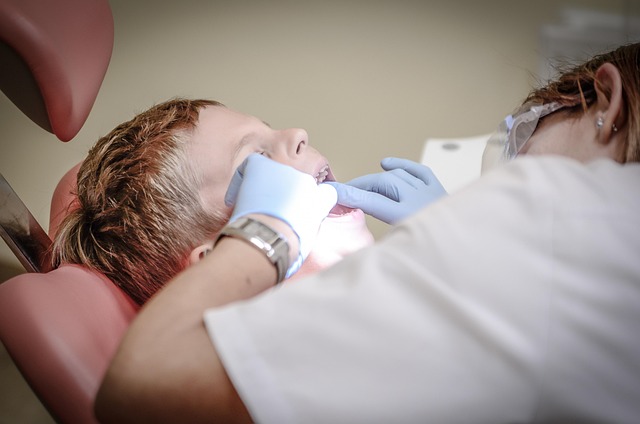Understanding the Benefits of Braces and Dental Splints
Orthodontic treatments, including braces and dental splints, play a vital role in enhancing oral health and personal confidence. Many individuals may contemplate the need for such interventions, wondering about their specific benefits and outcomes. This exploratory piece aims to unravel their advantages and contributions to overall dental well-being.

Modern orthodontic care encompasses a wide range of treatments designed to address dental alignment, jaw positioning, and protective measures for teeth and surrounding structures. Understanding how these treatments work and their long-term benefits helps individuals make informed decisions about their oral health care.
What Are Orthodontic Braces and How Do They Work?
Orthodontic braces function through controlled pressure application over extended periods to gradually move teeth into proper alignment. The system typically consists of brackets attached to teeth, connected by wires that create gentle, consistent force. This pressure stimulates bone remodelling around tooth roots, allowing teeth to shift into new positions. Modern braces utilise advanced materials including ceramic, metal alloys, and clear aligners, each offering specific advantages depending on individual needs and preferences.
The treatment process involves regular adjustments where orthodontists modify wire tension and bracket positioning. These adjustments ensure continuous progress toward desired alignment while maintaining patient comfort. Treatment duration varies significantly, typically ranging from 12 to 36 months depending on complexity and individual response to treatment.
Types and Functions of Dental Splints
Dental splints serve multiple protective and corrective functions, addressing various oral health concerns beyond simple alignment issues. Night guards protect teeth from grinding and clenching during sleep, preventing enamel wear and jaw strain. Occlusal splints help redistribute bite forces evenly across teeth, reducing pressure on specific areas and alleviating temporomandibular joint disorders.
Sports guards provide essential protection during physical activities, absorbing impact forces that could otherwise cause dental trauma. Stabilising splints support teeth following injury or periodontal treatment, maintaining proper positioning during healing processes. Each type requires custom fitting to ensure optimal effectiveness and comfort during use.
Health Benefits Beyond Aesthetics
While improved appearance remains a significant motivator for orthodontic treatment, the health benefits extend considerably further. Properly aligned teeth facilitate more effective cleaning, reducing bacterial accumulation and lowering risks of gum disease and tooth decay. Improved bite alignment reduces excessive wear on specific teeth, preventing premature deterioration and potential fractures.
Correct jaw positioning alleviates strain on facial muscles and joints, reducing headaches and jaw pain associated with misalignment. Better chewing efficiency improves digestion and nutritional absorption, contributing to overall health. Speech clarity often improves as tongue positioning becomes more natural with properly aligned teeth.
Common Challenges and Maintenance Requirements
Orthodontic treatment presents various challenges requiring patient commitment and adaptation. Initial discomfort following adjustments typically subsides within days as patients adapt to new pressure levels. Dietary modifications become necessary, avoiding hard, sticky, or chewy foods that could damage brackets or wires.
Maintaining proper oral hygiene requires additional effort and specialised tools. Interdental brushes, floss threaders, and water flossers help clean around brackets and wires effectively. Regular dental check-ups become more frequent to monitor progress and address any complications promptly. Compliance with wearing schedules for removable appliances directly impacts treatment success.
Cost Considerations for Orthodontic Treatments
Orthodontic treatment costs vary significantly based on complexity, duration, and chosen treatment methods. Understanding financial implications helps patients plan appropriately and explore available options.
| Treatment Type | Provider | Cost Estimation |
|---|---|---|
| Traditional Metal Braces | NHS Orthodontics | £1,500 - £3,000 |
| Ceramic Braces | Private Practice | £2,000 - £4,500 |
| Clear Aligners | Invisalign Providers | £2,500 - £5,500 |
| Night Guards | General Dentistry | £200 - £600 |
| Sports Guards | Dental Laboratories | £150 - £400 |
Prices, rates, or cost estimates mentioned in this article are based on the latest available information but may change over time. Independent research is advised before making financial decisions.
Insurance coverage varies considerably, with some policies covering portion of treatment costs, particularly for children. Payment plans and financing options make treatment more accessible, allowing costs to be spread over treatment duration. Private treatment typically offers more flexibility in appointment scheduling and treatment options, while NHS provision focuses on cases meeting specific clinical criteria.
Treatment represents a long-term investment in oral health, potentially preventing more expensive procedures later. Regular maintenance and follow-up care ensure treatment benefits persist over time, maximising the value of initial investment.
Orthodontic treatments continue advancing with technological improvements and refined techniques. Understanding available options, associated benefits, and practical considerations enables informed decision-making about oral health care. Professional consultation remains essential for determining appropriate treatment approaches based on individual circumstances and goals.
This article is for informational purposes only and should not be considered medical advice. Please consult a qualified healthcare professional for personalised guidance and treatment.




